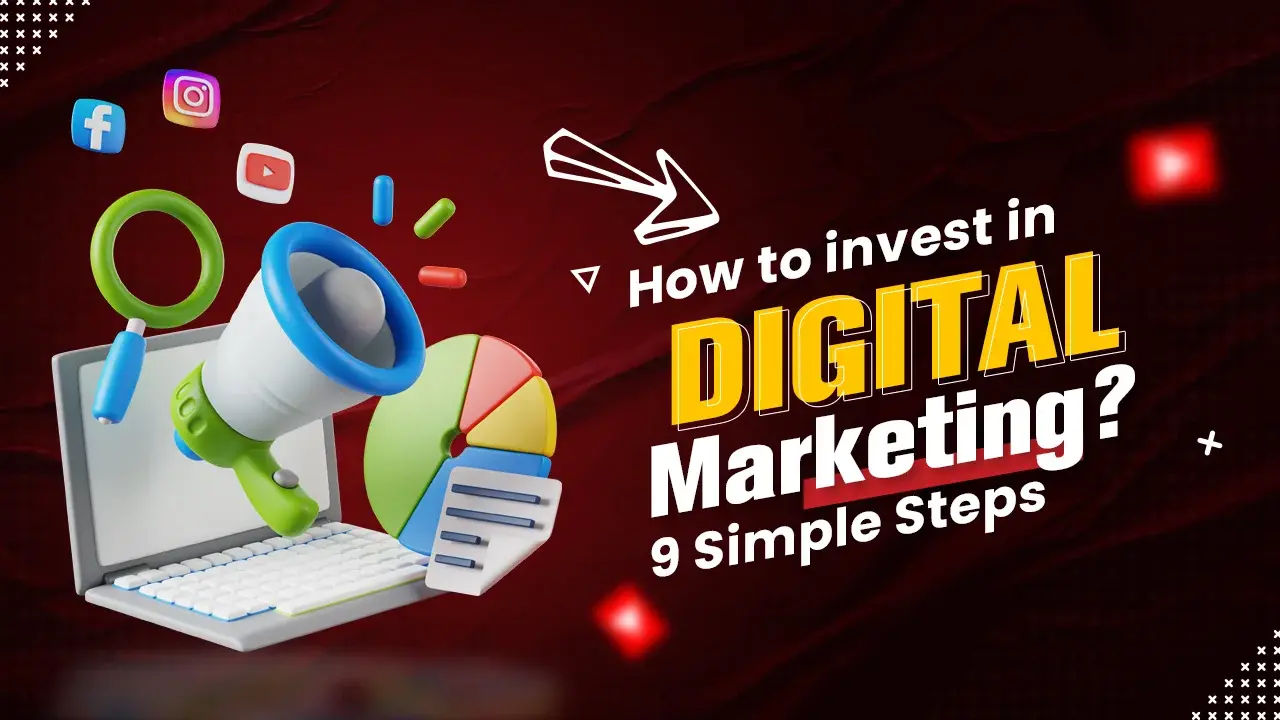If you want to start using digital marketing for your business and see good results, follow these nine easy steps. Here’s how to make the most of your investment in digital marketing:
Step 1: Know Your Audience
First, figure out who your ideal customers are. Create profiles of your target audience by finding out their age, interests, problems, and online habits.
How to gather this info:
- Use surveys or feedback forms.
- Check your social media and website data.
Example:
If you run a tech company for remote workers, your ideal customer might be a 35-year-old remote worker who loves productivity tools. Knowing this helps you create content and choose the right platforms to reach them.
Step 2: Set Clear Goals
Once you know who you’re targeting, set specific goals for your marketing. Use the SMART method to make your goals clear and achievable:
- Specific: What exactly do you want to achieve?
- Measurable: How will you track your progress?
- Achievable: Is it possible to reach this goal?
- Relevant: Does it align with your business?
- Time-bound: When do you want to achieve it?
Example:
If you want more people to know about your brand, set a goal to increase your social media reach by 20% in the next three months.
Step 3: Pick the Right Platforms
Choose the best online platforms to reach your audience. Think about where your customers are most active.
For example:
- B2B businesses: Focus on LinkedIn.
- Lifestyle brands: Use Instagram and Pinterest.
Example:
If you own a bakery, use social media and local SEO strategies like creating a Google My Business profile to attract nearby customers.
Step 4: Create Useful Content
Make content that helps solve your audience’s problems. Your content should match your brand and interest your audience.
Types of content:
- Blog posts
- Videos
- Infographics
- Podcasts
Example:
If you have a fashion brand, you might write blog posts about sustainable fashion, make behind-the-scenes videos, and share customer testimonials on Instagram.
Step 5: Improve Your Search Engine Ranking (SEO)
Getting your website to appear higher in search engine results can bring more visitors to your site. Focus on using the right keywords and following SEO best practices.
Tips:
- Use keywords related to your business.
- Optimize your page titles, descriptions, and headings.
Example:
If you run an online bookstore, use keywords like “best thriller books 2024” in your blog posts and make sure your product pages are optimized for book titles and authors.
Step 6: Use Paid Ads
If you need quick results, invest in paid advertising. Platforms like Facebook, Google, and Snapchat offer ads that can help you reach a larger audience.
Tips:
- Set a budget and choose your target audience.
- Create ads that grab attention.
- Monitor and adjust your ads based on performance.
Example:
For a company selling project management software, run Google Ads with keywords like “best project management software” and highlight your product’s unique features.
Step 7: Try Email Marketing
Email marketing is great for personal communication. Collect email addresses from your website visitors and organize them into a list.
Tips:
- Personalize your emails based on what your customers like and do.
- Use automation tools to manage and send emails.
Example:
If you run a skincare store online, send emails with product recommendations based on past purchases and offer discounts to customers who left items in their shopping cart.
Step 8: Track and Analyze Your Results
Regularly check how well your marketing is working using tools like Google Analytics. This helps you see what’s working and what needs to be changed.
Tips:
- Track key metrics like conversion rates and bounce rates.
- Analyze how people are using your site and what’s making them convert.
Example:
Use Google Analytics to see how many visitors are making purchases on your website and identify any pages that need improvement.
Step 9: Stay Flexible and Keep Growing
The digital marketing world is always changing. Stay updated on new trends and technologies, and be ready to adjust your strategy as needed.
Tips:
- Be open to trying new approaches and testing what works best.
- Keep an eye on industry changes and user behavior.
Example:
If more people start using voice search, adjust your website content to fit voice queries and explore new advertising options.
By following these steps, you can effectively invest in digital marketing and help your business grow. Good luck with your digital marketing journey!



